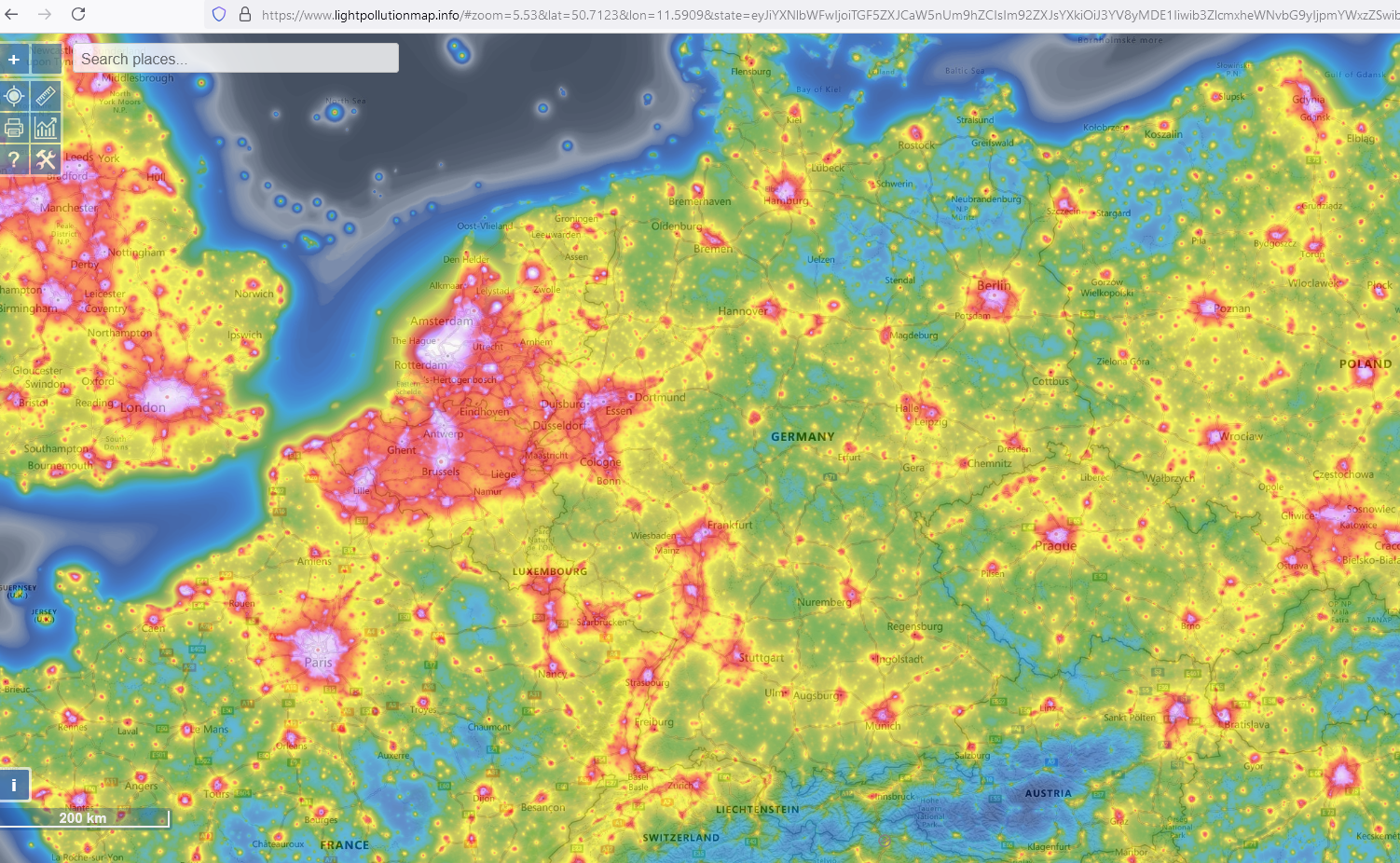The topic of light pollution is not only of concern to bat experts. The topic is playing an increasingly important role in science and nature conservation in an interdisciplinary manner. Unfortunately, methodological instruments are often still lacking in practice to assess the impact of light pollution on the environment. For this reason, landscape planner Dr. Maria Zschorn has devoted herself comprehensively to the topic and developed a dissertation entitled “Light Pollution – Method Development for Analysis and Evaluation for Precautionary Landscape Planning”.
Summary (original):
In recent years, awareness of the issue of increasing light pollution has increased worldwide and also in Germany. In the meantime, it is no longer only astronomers and biologists who are concerned with the effects of artificial night brightness. Lighting planning, city administration and politics are also looking for ways to counter the problem. Landscape planning as a sectoral planning of nature conservation in Germany has the task of analysing and evaluating nature and landscape as well as the effects of anthropogenic activities on them. According to current research, artificial lighting has negative effects, especially on the protected assets of species and biotopes as well as landscape design and recreation. Insects dying from light sources due to heat and exhaustion, bats being prevented from leaving their roosts, an increased risk of cancer for humans or the obstruction of astronomy science and research are just a few examples of negative effects. However, methodological approaches are lacking for the analysis and evaluation of such pressures in the context of landscape planning. The development of these is made more difficult by the complexity of the topic and the range of departments and actors involved. In addition, there is a lack of reliable limit values due to a lack of research. This thesis is dedicated to the development of a methodological approach that makes it possible to determine the effects of lighting on nature and landscape in the context of municipal landscape planning and to apply adequate measures. Specifically, the questions of how light pollution for the affected protected interests of landscape planning can be determined, spatially located and prevented, reduced or eliminated by means of measures is dealt with. The methodology is divided into three steps: A – Analysis of the lighting situation, B – Assessment of light exposure for species and biotopes and C – Assessment of light exposure for landscape design and recreation. The developed methodology is carried out in ArcGIS Pro, uses easily accessible data bases and does not require any complex additional knowledge of the planner on the topic of ‘light’. An action guide at the end of the thesis enables a quick overview and easy execution of the individual steps.
Download the entire dissertation: https://tud.qucosa.de/api/qucosa%3A89676/attachment/ATT-0

